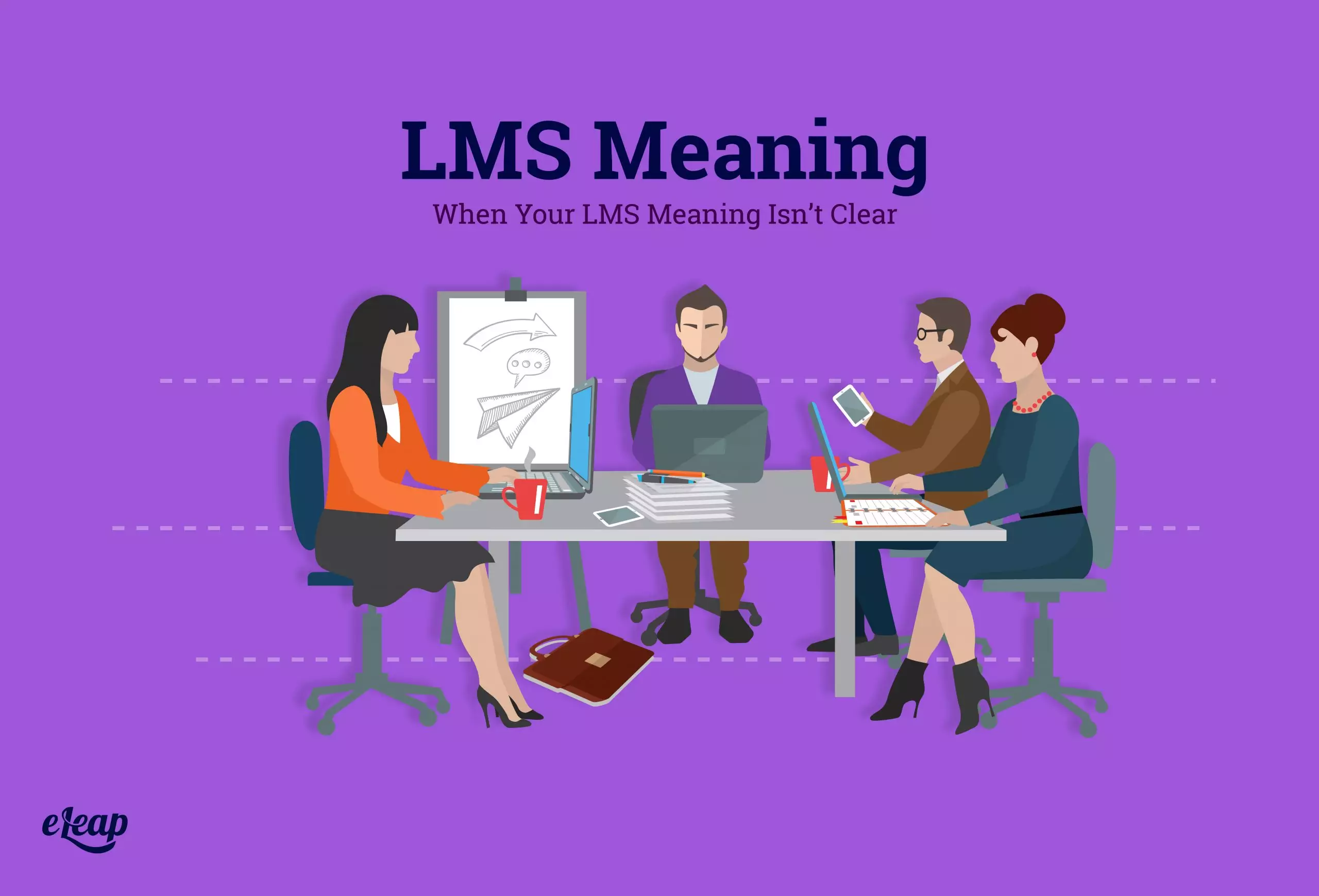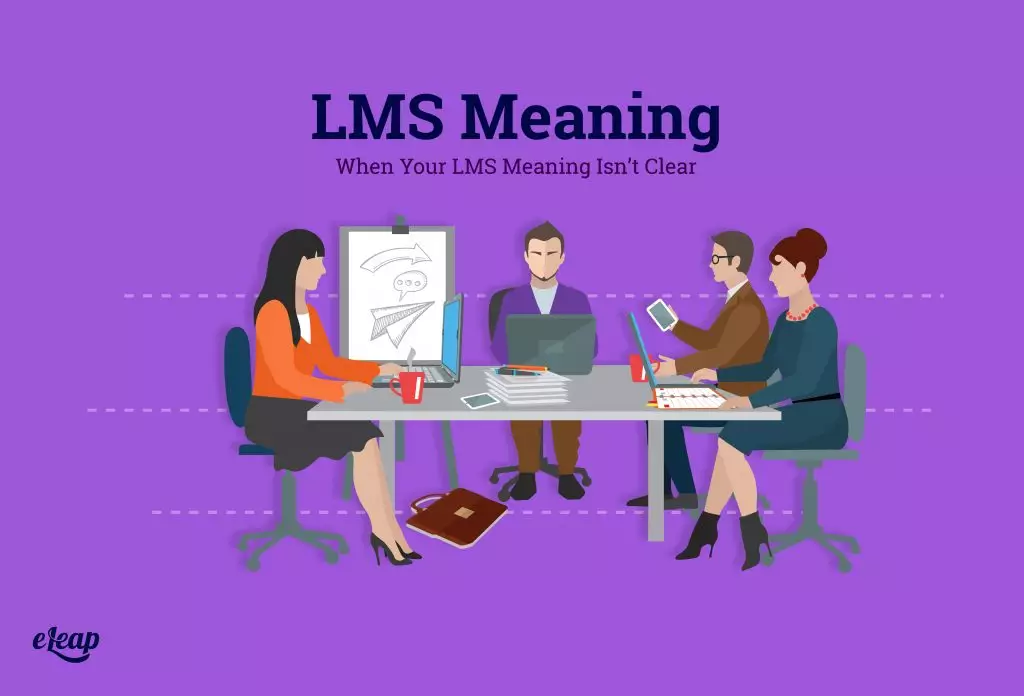LMS Meaning
When Your LMS Meaning Isn’t Clear

By now most everyone knows that LMS stands for learning management system. It’s what helps you organize, distribute, manage, track, and evaluate all the learning efforts in your company. But it’s also only one aspect of LMS meaning. There’s a lot more that goes into successful learning in an organizational environment than the system you use to manage it.
Whether you have an open-source LMS for business, a proprietary LMS, an on-site solution, or subscribe to a web-based LMS, now is the time to get clear on what you need your LMS to do for you. It begins by being thorough in determining the learning management system features and benefits your company needs. Below, we’ll discuss some elements to keep in mind.
The LMS Meaning to Your Business Goals
Randomly chosen learning and training do nothing to clarify your LMS meaning. Before you even think about learning at your company, you must make sure everyone involved has a clear understanding of the business goals of your organization so that all your learning efforts can align with and support those goals.
For some businesses, this can be challenging. If you don’t have a clear goal of what you want to achieve and when you want to reach those goals, it becomes difficult to use an LMS. It also becomes challenging to track progress and growth. After all, if you don’t know where you want to go, how will you know when you get there? Define your business goals and then align your L&D efforts to support them.
Learning Goals and LMS Meaning
With clarity on your business goals, you can then proceed to start mapping out the learning goals you think will best support the business goals. It may be that your business goals require a high level of certain skills in particular departments, such as your salespeople sharpening their ability to build rapport with existing and prospective customers, or top-notch customer service skills in your field techs or helpdesk personnel. When you think about it this way, the highest degree of LMS meaning can only be achieved when business goals are compared to employee capabilities and then learning programs developed to close any gaps that exist.
You’ll need to map your business goals and objectives to the course content in the LMS. What does that mean? Simply put, you must design the training and development material to teach your learners what they need to know in to reach those goals. So, you’ll need to know how your employees fit into the overall strategy and how they support your objectives.

Your LMS Should Support Content Development
When you have clarity on who needs to learn what in your organization, you can start developing the actual content that will deliver the knowledge and learning to those who need
- Generally, there will be three broad content types to consider, which include the following:
- Professional CE – This is mandatory training required for certain employees to maintain their licensure. It involves training, but also transmitting completed credit hours to governing bodies in the state or federal government, or the industry itself.
- Mandatory Corporate Training – Some types of training are applicable (and mandated) for all employees. These are topics like workplace diversity and workplace safety. Everyone will need to complete these courses.
- Upskilling and Professional Development – This type of content is designed to close skills gaps, help your employees upskill, and develop themselves professionally. The goal is to help them grow into a rewarding successful career with your company.
At this point, you shouldn’t even be thinking yet about how it will be delivered. That comes next! Delivery is equally important as content development.
LMS Content Delivery
Once you’ve mapped out exactly what the content will be, now you can sit back and look at the content to determine what would be the best way to deliver that content. If you have a delivery method chosen before developing the content, then you may be limiting what you include to make it fit the preconceived delivery method. It’s much better to nail down the content and then decide how best to deliver it.
It doesn’t have to only be one delivery method. There may be some content that can be delivered through eLearning, some through face-to-face instruction, and some that is blended. Let the delivery methods fit the content for heightened LMS meaning.
You also need to consider how the delivery method fits with learning style and even preferences. For instance, video content is much more engaging than text-based content. Gamified content, audio content, quizzes, collaborative learning methods – these are just a few of the many options available to you.
Learning Evaluation with the LMS
There are two aspects to this: The first is figuring out how to best assess the learning of participants in the program you’ve created. The second aspect is making sure participants have plenty of opportunities to provide feedback about their learning experience so you can improve future learning efforts. Both are equally important.
If you can’t track your learner’s progress, you’ll have no idea where they’re struggling, where they excel, or even who has completed what studies. If you don’t actively seek feedback from your learners, then you lack any guidance on what you could be doing better, what you’re doing right, and what learners need to succeed. Tracking and evaluation should be central to all of your efforts – never approach learning and development with a “shoot from the hip” mentality.
In Conclusion
To summarize, there’s a lot more that feeds into LMS meaning than the actual system itself, including business goals, learning goals, content development, content delivery, and learning evaluation. All these extras need to be supported by a top-notch LMS. Armed with this information, you can conduct a much better learning management system comparison to find one that works for you.
Need additional information? Check out these resources: